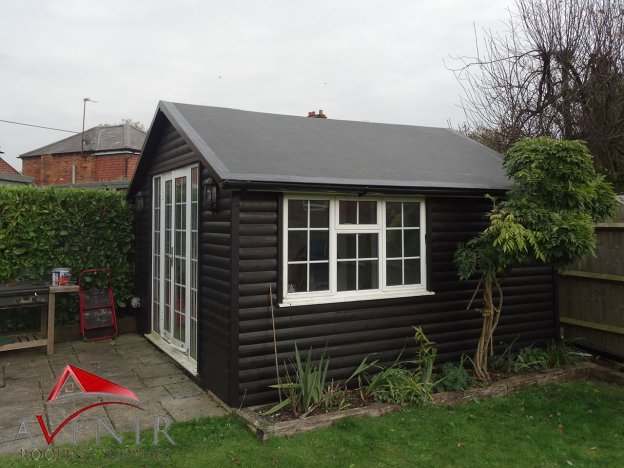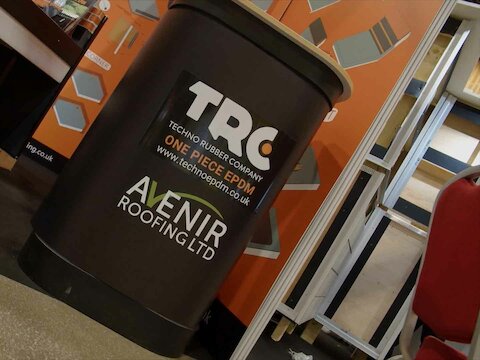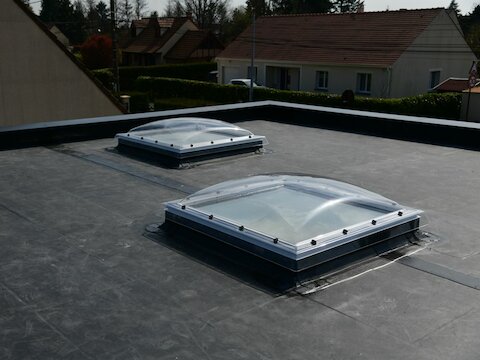Which Flat Roofing Material Should You Choose?

Constructing a flat roof takes time, effort and the right materials. In fact, you might be surprised at the number of available options, and they’re usually all acronymed too! From EPDM to TPO, roofers need to know which material works best in any given situation. This is essential during the initial consultation process with a client, as you should provide information that allows them to make an informed decision.
In that regard, we’ve examined 5 common materials that are often used in the construction process. There’s more to each roofing material than meets the eye, and we’ll cover all the bases here.
Firestone EPDM
As an extremely popular option for flat roofing across the country, EPDM is a great cost-effective material. In fact, we supply Firestone EPDM ourselves. Made from a synthetic rubber compound that’s specifically designed for this purpose, it’s usable for buildings, big and small. Extensions, offices and even garden sheds can benefit from EPDM, especially if it’s from a reputable brand. Firestone has been providing rubber products and technology for more than a century, which is why we partnered with them to sell EPDM.
EPDM is lightweight, making it suitable for smaller or weaker structures. It also needs little-to-no maintenance, with a life expectancy of more than 50 years when installed correctly. It’s classed as an eco-friendly roofing option as a result. The material is also easy to install with a flame-free application, making it perfect for all kinds of structures. As a result, it’s the material that we’d recommend, with more details available here.
PVC Membrane
Also known as polyvinyl chloride, this roofing option comes in several colours and thicknesses. As a result, the lifespan tends to vary depending on the thickness you choose, but it generally lasts around 20 years. It’s an incredibly durable roofing option, with resistance to the elements and chemicals that may spill on to the roof. As you can imagine, this does make it quite costly, with PVC being one of the most expensive materials in this article.
It also has a tendency to stretch as its lifespan runs out, which pulls at the seams and causes leaks if not spotted early enough. The installation process can be quite tricky too, and repairs are costly as a result of this. If you’re building with asphalt too, you should avoid this material, as they are chemically incompatible with each other.
TPO
Thermoplastic polyolefin, or TPO roofing, is a single-ply roofing membrane that covers a roof. It’s a relatively new option in terms of roofing materials, so it still has some teething issues that need ironing out. Each seam is welded, rather than glued together, which is more demanding on the installer, yet it results in a durable roof that is less prone to separation. They have a unique advantage too, as the surface of TPO is white, which reflects ultraviolet light from the sun. This keeps the building cool.
As previously mentioned, however, this roofing system is new to the industry, undergoing many revisions since its inception. As a result, the warranty tends to only be around 15-20 years, which is a far cry from the 50 years that EPDM provides. The installation process also requires special tools too, often resulting in increased expenses. It has its benefits over other types of roofing, but at the moment, it’s too experimental to recommend.
Fibreglass
Also known as Glass Reinforced Plastic, modern fibreglass roofing has changed since its original inception. Originally, it was difficult to install, as roofers experimented with techniques. (Similar to what’s happening with TPO now.) Since then, roofers have gotten better and accredited fibreglass installers are available. While it is still seen as slightly complicated to install, it’s now a lot better than it used to be. As a result, you could receive a durable fibreglass roof with a warranty of around 25 years. They are also multi-purpose, as the lightweight material can be used for complicated shapes or green roofs.
One of the main drawbacks of this material is that it costs more to produce and install. In fact, that’s one of the main reasons that people choose other options, as it just isn’t cost-effective for them. As a result of this cost, they’re generally not used for large roofs, and we’d recommend EPDM as a money-saving alternative. One unique disadvantage of this material is that it has specific installation conditions. It needs to be installed in dry weather, so the process can often take longer than other options.
Felt
Felt roofing is an extremely popular roofing material, especially on smaller structures such as sheds and garages. It’s generally easy to install, making it an inexpensive option that’s cheaper than most of the materials in this article. You can also easily place a new felt patch on if any tears occur. Several colours are available too! It’s cheap, easy to install and customisable. What’s not to like?
Well, in fact, it has a short lifespan compared to the options here. Usually you’ll get a maximum guarantee of 10 years. This is due to the impact that various weather types have on felt roofing. Prolonged heat can cause warping, while in winter it can become brittle due to cold temperatures. It’s also important to mention that while it is easier to repair, it can often look scruffy if you place patches over the affected areas.
Which Should You Choose?
While all of the materials have their positives and negatives, we have one recommendation. EPDM is a tried and tested material that combines a cost-effective price with impressive durability. Choosing Firestone makes all the difference, and we have what you need to expand your roofing operations. Further information is available here. You can also call us on 01494 473660 if you have any questions.




